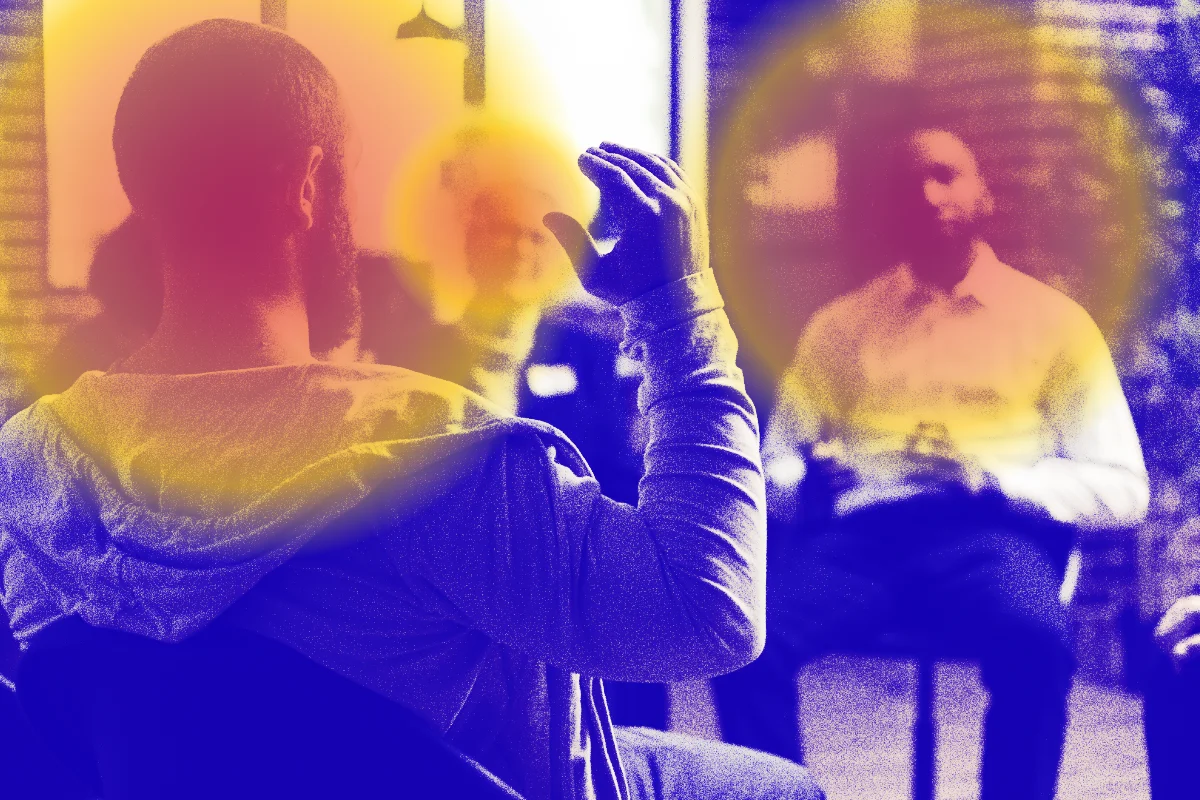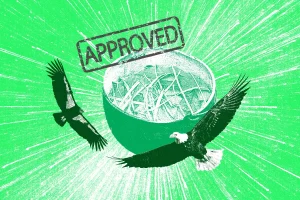Boysen Hodgson couldn’t stop fighting with his girlfriend. They fought about money. They fought about loyalty. And they fought about his use of porn. He was determined to hide it from her, desperate for her to believe that he was a “good boy”—to give him the validation he wasn’t giving himself.
They were in their twenties and dated for eight years, but fell into a toxic pattern Hodgson now calls “codependent.” He remembers raising his voice, becoming “not physically, but emotionally violent.” He struggled to set boundaries, until it reached a point where he had few friends and little connection with his family. “I was a pretty unconscious dude,” he says. “I had a sense of powerless frustration, in a way that scared the hell out of me.”
Working with a “really good female therapist” helped him finally end his relationship, but once he started dating again, he found himself repeating the same patterns. “Whenever I was on the edge of commitment, I was already starting to shut down emotionally,” he says. “To conceal myself, instead of being open and connected.”
READ: The Sacred Cacao Ceremony: Is it Healing or Culturally Appropriative?
Following his brother’s advice, he attended a 48-hour “New Warrior Training” in 2014, hosted by a group called the ManKind Project, a global network of nonprofit groups aiming to transform manhood’s experience through workshops and regular meetings. That was when he started to become conscious of the social conditioning at the root of his frustration.
“Suddenly I’m standing face-to-face with a dude five inches taller than me, asking if I’m ready to do whatever it takes to get what I came here for,” Hodgson tells DoubleBlind. “I’d never stood face-to-face with a man I didn’t know and told him something honest about myself. But I said ‘yes’ and walked through that door.”
Over the course of just two days, he and other first-time men were put through exercises designed to help them identify self-limiting beliefs, such as “I’m never going to be good enough.” These “new warriors,” as the program calls them, soldiered on through a gauntlet of dramatic moments and challenging questions posed by previously initiated men. At one point, they were lifted over the heads of other men in the group to “have the experience of being held by men for the first time.” By Sunday, some of their long-standing assumptions had begun to decompose.
How to Grow Shrooms Bundle
Take Both of Our Courses and Save $90!
Hodgson is now 48, and serves on the staff for the ManKind Project. The project, which began with a 1985 retreat in Wisconsin, now serves nearly 10,000 men weekly in more than 1000 peer-facilitated men’s groups from South Africa to Australia and Western Europe. The network is also expanding fast in Mexico, Brazil, Japan, and Thailand.
Hodgson says his interest in the project has boomed in recent years, partly because of the #MeToo movement. Queries to the ManKind Project website have skyrocketed, and the group’s enrollment has risen eight percent in each of the last two years. By the end of 2018, more than 68,000 people had completed the New Warrior Training.
“I hear men saying, ‘I want to be part of the solution,’” Hodgson says. “How can we provide them ways of being accountable, and learning to take care of themselves so they’re not putting their emotional labor onto women?”
Hodgson relied on his girlfriend in that early relationship to boost his self-esteem. But after completing the initial training and joining a weekly ManKind Project circle in western Massachusetts, he learned to self-soothe and began to foster his own “emotional integrity and authenticity” thanks to the security created by men holding space for one another. He learned that it was OK to experience emotions, and today he knows that it’s not his partner’s job “to make me feel good about who I am.”
READ: You Can Now Join Psychedelic Communities All Over the World
In 2008, Hodgson co-founded a new men’s circle in Springfield, Massachusetts. Having overcome his codependent past, he’s now raising two kids with Karen, his wife of fourteen years. He credits men’s circles with helping him deconstruct the sexism he learned growing up, and teaching him how to communicate. ”I’d been steeped in shame for so long,” he says, but his first circle, the Western Mass Special Boys—“those guys loved the shame out of me.”
The ManKind Project is just one option for male-identified people seeking to become more mindful. While there’s never been a shortage of clubs catering to males, a specific breed of men’s circles arose in the 1970s as an outgrowth of the feminist movement, creating spaces where men could safely interrogate privilege and the norms of masculinity with an eye toward making society more livable for women. Today, large-scale organizations like Sacred Sons, Evryman, and MenEngage, as well as myriad local groups, facilitate these gatherings.
Tom Weinreich, who’s 29 years old, became part of the Brooklyn Zen Center’s peer group for men in 2016. Meeting monthly with the premise of “Undoing Patriarchy and Unveiling the Sacred Masculine,” his group, usually eight to ten guys, sits in a circle that begins with meditation, followed by facilitated discussion on a topic related to patriarchy. “What does accountability feel like in our bodies?—that’s the kind of question we would ask,” Weinreich tells DoubleBlind.
Like Hodgson, he was drawn to start unpacking his maleness after facing difficulties in romance. His first partner often asked, “What are you thinking? What’s going on inside you?” Unable to answer, Weinreich “threw it back in her face,” a knee-jerk reaction to feeling vulnerable. “There was a part of me that wondered whether it was possible to relate to people in another way,” he says, “or whether there was something I was missing.”
Weinreich’s also seen the #MeToo movement influence the discussions in his group. For every man who’s been inspired to become “part of the solution,” there’s another who feels that accountability is a witch hunt set up to oppress him. “Every once in a while, someone will show up with this story of aggrieved white masculinity,” Weinreich says. “I definitely try as somebody holding that space to listen for what’s underneath that.”
“Sometimes, someone has this fear, and they just need to be able to express it,” he adds. “Not to have it validated, but to have it heard, so they can hear themselves. Like, ‘Why am I afraid of being accused of something, when I’m making the choices of what to do? Where is this fear coming from?’ On the other side of that is this opportunity to see the real cost—the real, legitimate fears and pain of being socialized as a man.”
This year, Weinreich helped launch a virtual men’s circle called “Organizing White Men for Collective Liberation.” Through regular 90-minute video calls (which Weinreich says are “never long enough”), the geographically diverse group has conversations aiming not just to unpack their privilege but to learn new ways of being in the world that actively challenge it. He calls #MeToo “a gift” because “in order to get free, men are going to need women, non-binary, and trans people to tell us the harms we are doing.”
Learning to hear and respond to those voices can help men see around their own corners. “If we saw, we wouldn’t have done the harm,” he says. “We don’t actually want to hurt people.”
This story originally appeared in DoubleBlind Issue No. 2

DoubleBlind is a trusted resource for news, evidence-based education, and reporting on psychedelics. We work with leading medical professionals, scientific researchers, journalists, mycologists, indigenous stewards, and cultural pioneers. Read about our editorial policy and fact-checking process here.

DoubleBlind Magazine does not encourage or condone any illegal activities, including but not limited to the use of illegal substances. We do not provide mental health, clinical, or medical services. We are not a substitute for medical, psychological, or psychiatric diagnosis, treatment, or advice. If you are in a crisis or if you or any other person may be in danger or experiencing a mental health emergency, immediately call 911 or your local emergency resources. If you are considering suicide, please call 988 to connect with the National Suicide Prevention Lifeline.



